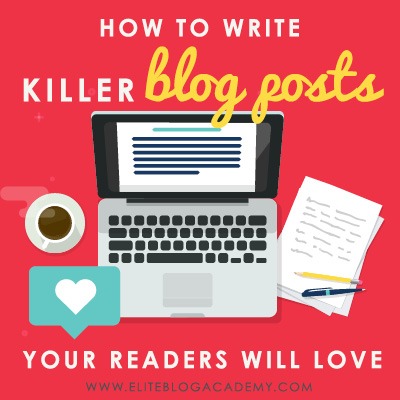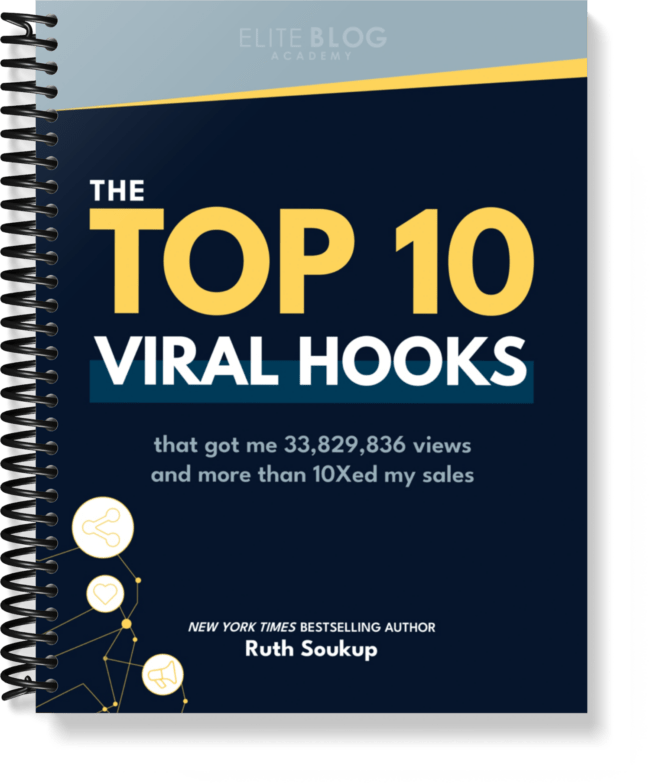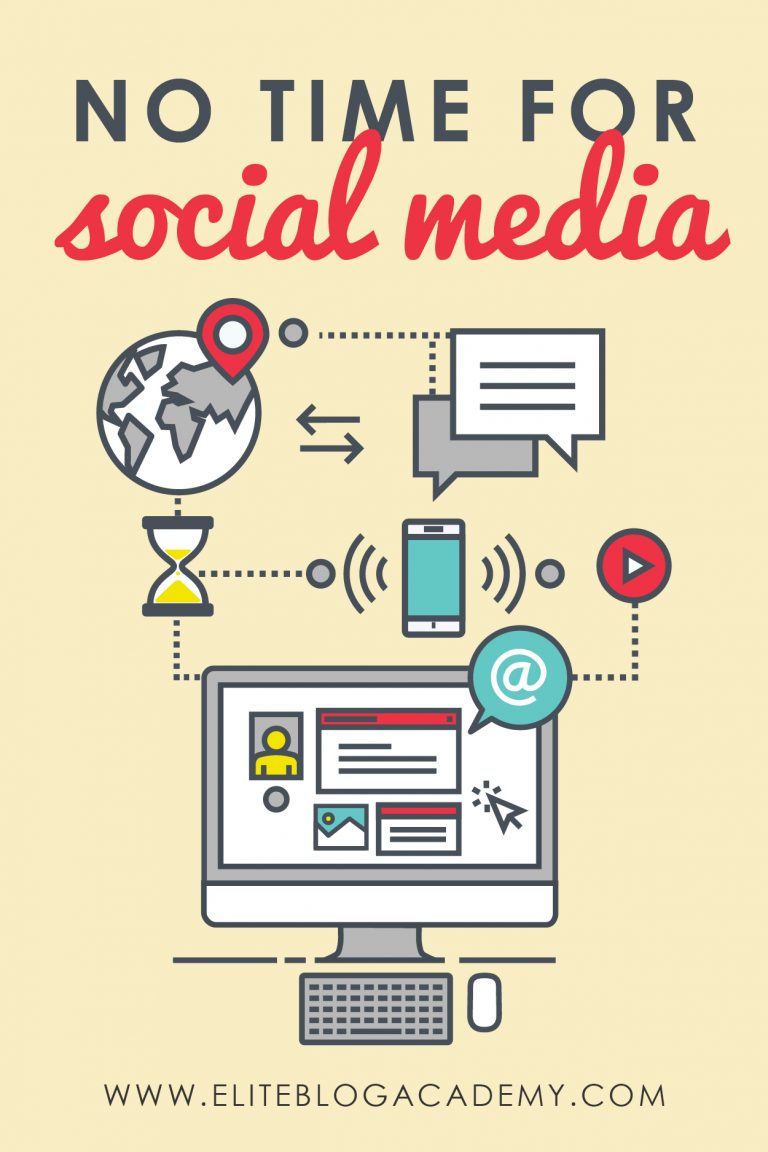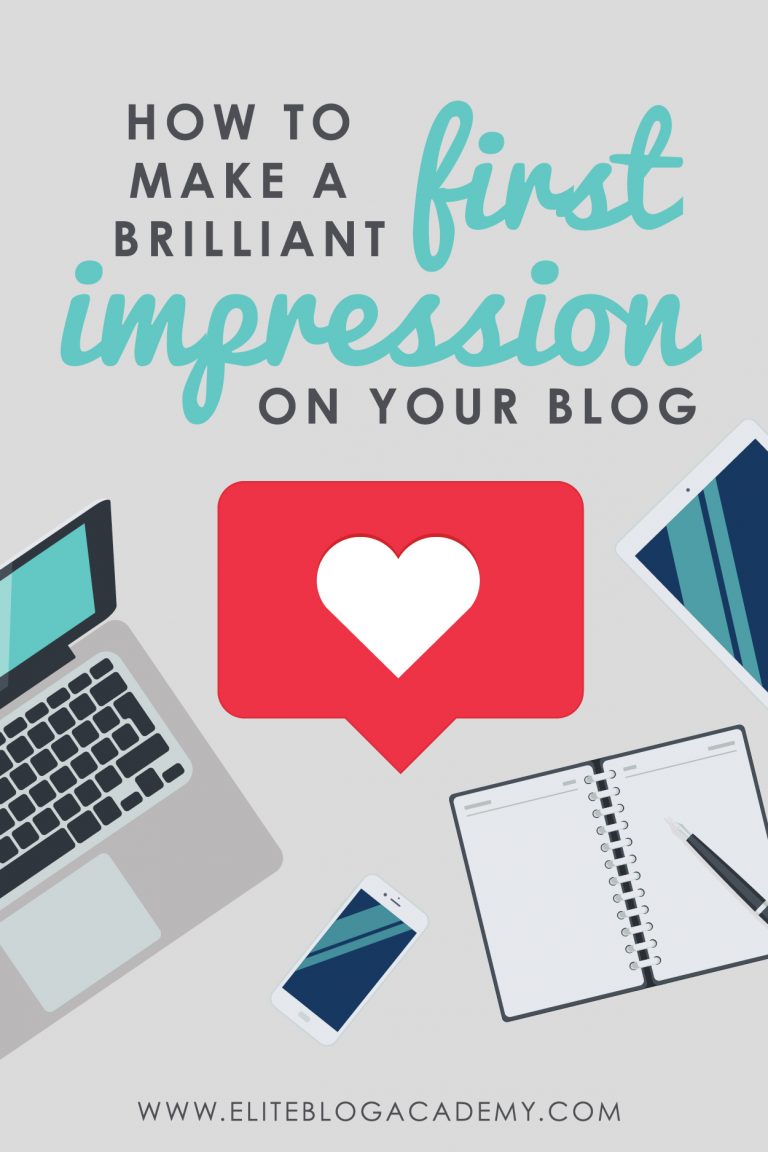How to Write Killer Blog Posts that Your Readers Love

Struggling to find the right blog post structure to connect with your audience? Don’t miss this post on the 7 possible blog post formats and how to choose the best ones for your readers!
Choosing what kind of blog post to write is kind-of like learning to drive a stick shift. When we’re starting out, it’s something we have to consciously think about and focus on in order to keep our blogs moving in the right direction. But after a while, it starts to come naturally. We instinctively know what to do and what type of blog post will connect best with our audience.
But before we know which type of blog post is the best fit for our audience, we need to know exactly what those blog post types are. There are plenty of different formats we can use, and depending on what kind of content we’re creating, some formats work better than others.

Are you ready for one sentence to change your business?
Using the right hook can do just that!
The truth is, an Instagram reel won’t change your business, at least not all on its own. But if you’re using the power of Instagram to drive leads into your business, using the right hook is vital for your success. Grab the exact hooks that have gone viral for my @ruthsoukup Instagram account again and again (and got me over 30 MILLION views and tens of thousands of new followers).
And the best part? It’s completely free! Just fill in your information below so I know where to send it.
Should we stick to listicles? Should we only write how-to posts? What about interviews, or stories, or a content series?
Let’s take a look at the seven different ways we can structure our content to really connect with our target audience — and when the best opportunities are for each!
How to write killer blog posts that your readers will love
Blog Post Type #1: Share a Struggle and a Lesson Learned
One of my favorite types of blog posts — and one I use all the time! — is what I call “share a struggle and lesson learned”. It’s where we share something we’re struggling or have struggled with — some sort of problem or obstacle. We share about the struggle, but more importantly, we share about how we overcame that struggle and the key takeaways we got from the experience.
Many of us are hesitant to share our struggles. Putting ourselves out there and sharing what we’re struggling with can be a vulnerable experience. Not only does it make us feel exposed, but it also shows we don’t have all the answers. We’re not an expert. We struggle too.
But here’s the thing: sharing our struggles doesn’t push our audience away. If anything, taking down that “I’m the expert” wall and showing our audience we’re real people with real struggles makes us more relatable and, as a result, builds a deeper connection with our readers.
I know a travel blogger who’s built a brand around her luxury, full-time, round-the-world travel experiences. Everything she shares with her audience is completely over the top and the picture-perfect image of “my life is amazing!”
But the reality of her experience is totally different. Her day-to-day routine of organizing all her travel more closely resembles full-blown panic mode than the Instagram-worthy content she shares with her audience.
For whatever reason, she can’t (or won’t) be open about those struggles with her audience. She’s fiercely protective of her “expert travel” persona… Unfortunately, that persona has kept her from forming a real connection with her audience, who would be much more likely to relate to her “OMG I forgot to book my flight!” moments than her “check me out on this yacht” moments.
Moral of the story:
Sharing our struggles and showing we are human, is a great way to connect with our audience and create content that really resonates.
Quick side note: it’s easy to veer into “rant” territory when writing this type of post, so we need to make sure when we’re sharing our struggles, we stay focused on the solution — not the problem.
Blog Post Type #2: The Review
Another type of post that really resonates with audiences is the review post.
A review post contains our thoughts and opinions on something: a product (like a book or course), an event, a service (like a coaching package), or something else we’ve experienced that we think our audience would want to hear about.
Reviews can be directly tied to affiliate programs we’re connected with or can just present our general thoughts and opinions.
There’s a huge spectrum when it comes to reviews. They can range from the overwhelmingly positive (This product changed my life!) to the overwhelmingly negative (This product is a waste of time, energy, and money!), and the whole varying neutral territory in between.
If there’s a product or service we know, use, and love — and happen to be an affiliate for — writing a positive review is a great way to inform our audience about the benefits and drive affiliate commissions.
But while we of course want to keep affiliate reviews to be positive, it’s also important to keep it real with our audience. It’s better to say, “I like this product… I think x, y, and z could stand to be improved, but overall, it’s worth the investment,” than to ignore any shortcomings and risk losing the trust of our audience.
So what about negative reviews? My personal philosophy on my blog is to stay away from the negative.
Scathingly negative reviews — where we completely trash a product, service, or experience — will clearly reflect poorly on whatever we’re reviewing, but if we’re not careful, they can also reflect poorly on us.
In my opinion, if you don’t have anything good to say about a product that you are an affiliate for, I would think twice about writing a review on it–or about continuing your affiliate relationship. (Though it’s perfectly fine to be honest about both the pros and cons, as long as it is something you genuinely recommend.)
There are a few different ways to do reviews. We can review a single product, service, or experience in a blog post, or we can do more of a “review roundup” where we review multiple items in one blog post.
Either way, just keep in mind that the most important thing is to be honest in our reviews. The more honest we are with our audience, the more trust we’ll build — and the more our content will resonate with them.
Blog Post Type #3: How-To Posts
Another one of my favorite types of blog posts is the how-to post. These can run the gamut from how to cook a favorite recipe, to DIY crafts, to how to achieve a specific goal.
The key to writing a successful how-to post is to a) make sure it’s something our audience actually cares about and wants to know how to do (which comes from really knowing who your avatar is), and b) give them super clear step-by-step instructions on how to get it done.
Everyone has a different writing style, but it’s important to note that just because we’re writing a how-to post on a particular topic doesn’t mean we need to have all the answers! We don’t have to know everything about everything.
In fact, writing the post from a more humble perspective — and coming across as more of a friend than a teacher — can help a how-to post resonate more with our audience.
A few years back, I wrote a how-to post on making pajama pants. Now, full disclosure: I’m not a very good sewer. In fact, I’m pretty sub-par. I hate using patterns and would rather just wing it, mostly because I have no patience, and I am also NOT a perfectionist. But instead of trying to pretend like I 100% knew what I was doing, I was totally upfront about my shortcomings in the post.
Instead of saying, “Here’s a tutorial for creating the perfect pair of pajama pants,” I said, “I’m not the best sewer in the world, and if you are a good sewer, you should probably IGNORE this post, but I found a quick and easy way to make these cute pajama pants and wanted to share it with you!”
By being totally transparent about my lack of sewing skills (and the speed bumps I hit along the way), I connected with the audience more.
Knowing I had struggled showed them it’s okay to not do it perfectly — which made them more excited to try to make the pants themselves.
To make a long story short, when we’re doing a how-to post, it’s important to be honest about our mistakes and show our readers exactly how we overcame them. That’s the key for creating a how-to post that feels more like it’s coming from a helpful, fun friend than a mean, strict teacher.
Blog Post Type #4: Round-Up Posts
Next up, round-ups!
There are lots of different ways to do round-up posts. We can do a round-up where we write about one specific topic and reach out to a handful of bloggers to get their thoughts and opinions on that topic.
Or we can do a round-up of our favorite bloggers, a round-up of our favorite ways to do something (like “12 Make Ahead Appetizers Your Guests will Go Crazy For” with links to tutorials from other bloggers)… Seriously, the possibilities are endless.
Now, a major benefit of doing round-ups is that it not only presents an opportunity to connect with bigger bloggers in our space, but once the post is done, there’s also a good chance they’ll share it on their social media channels, which is a great way to drive fresh, new traffic to our blogs!
And the best part about round-ups? People LOVE to read them. As long as we keep our topics relevant to what our audience would like to read about, these posts are typically slam dunks.
On LWSL, we used to do a weekly round-up called “Weekend Wandering,” that featured some of the favorite shares to our Thrifty Thursday link party. It was not only a great way to connect with other bloggers in our space, but it was also a heavy favorite with our audience, who loved getting a round-up of the thriftiest tips on the internet each week.
Now, a quick word of caution: don’t do a round-up if your only reason is getting the attention of other bloggers. While that’s definitely a secondary benefit, if it’s your only reason, your content will fall flat with your audience.
Struggling to come up with new content for your blog? We know how tough it can be! That’s why we came up with 120 awesome blog post ideas that will help you beat writer’s block and bring killer content that builds your business every time! Best of all, it’s free, but only for a limited time! GET IT HERE.
Blog Post Type #5: Interviews
Interview posts can work really well (I find them so interesting to read!). If we’re writing in a more specialty niche, connecting with experts and picking their brains can add a whole new level of depth to our blogs.
Interviews open up really great conversations, they’re great for offering our readers perspectives other than our own, and they’re a good way to build relationships with other people in our space.
Interview blog posts are also a great way to repurpose podcast content. All we have to do is get our podcast interviews transcribed and post the written content on our blogs!
A tip on interviews: it’s best not to publish the entire interview as a blog post (depending on how long an interview lasts, that could literally be the length of a novel!). Instead, it’s better to publish part of the interview, get our readers excited to learn more, and then offer the entire transcription as a lead magnet. That way, not only do we get great content for our blog, but the interview can also help us build our email list!
Any opportunity to kill two birds with one stone? I’ll take it.
Blog Post Type #6: Case Studies
If we’re selling a product or service on our blogs, then sharing a success story of someone who’s used that product or service — in the form of a case study — is a great way to deliver content to our audience.
For example, if you’re a life coach, you could share the experience of one of your coaching students. Or if you offer design services, you could share how you were able to spruce up your client’s space and help them build a home that felt uniquely them.
The point of a case study is to show how our products or services are working for our customers, and they’re a great way to get instant credibility with our audience without being too over-the-top sales-y.
The most effective case studies show a person going from where they are to where they want to be as a direct result of a product or service. We follow a very specific structure when we create case studies. Here are the questions we ask our case study subjects:
- What was your life like before this product/service?
- At what point did you know you needed a change?
- Once you got started with this product/service, what was your first breakthrough or AHA! moment?
- How has your life changed since you were introduced to this product/service?
- What do you feel were the major benefits of this product/service?
- What do you feel the next step is for you?
- What was the experience of working with this product/service like?
- Do you feel this product/service was worth the investment?
- What would you say to someone who was on the fence about purchasing this product/service?
With the answers to those questions, you’ll have everything you need to craft a case study that completely blows your audience away (and sells lots of products or services in the process!).
Blog Post Type #7: Comprehensive Guides
Last — but certainly not least — is the comprehensive guide. If there’s something we’ve been getting a lot of questions about, we can write a comprehensive guide on our blog to help clarify the issue for our audience (and eventually use it to launch a product!).
I’ve had a lot of really great experiences with creating comprehensive blogs. Early on in my blogging career, I had a ton of people asking me questions about couponing. “It’s so confusing!” they said. “I have no idea where to start! Can you help?”
So I did! I created an eight-part series called “The Beginner’s Guide to Coupons”. I wrote each of the posts in a super easy, step-by-step format; optimized them for SEO; published them — one part of the series each week for eight weeks; and then I created an index page with the table of contents.
These meaty types of posts tend to do REALLY well on search engines. “The Beginner’s Guide to Coupons” ended up ranking for a bunch of couponing keywords, and it just so happened that we released the series a few weeks before “Extreme Couponing” premiered on TLC, so once the show premiered, everyone was searching for those terms — and I got a TON of new traffic to the site.
There have been tons of bloggers out there who have used comprehensive guides to build their followings to drive massive amounts of traffic (like Pat Flynn’s “How to Start a Podcast” post), so if there are any topics that your audience is asking about, creating that step-by-step guide is not only a great way to get them the information they want — but also to build your following in the process.
There are so many different ways to format our content! I know it can seem overwhelming, but just remember:
The more blog posts we write — and the more we get to know our audience — the more intuitive choosing a blog post type will become.
Which type of blog post resonates well with your audience? Have you had success with one of the structures we listed above? Let us know in the comments!
Need more help coming up with blog posts your readers will love? Our 120 awesome blog post ideas will help you beat writer’s block and bring killer content that builds your business every time! Judine says, “This is one of the best tools I’ve gotten from EBA!” Best of all, it’s free, but only for a limited time! GET IT HERE.








Hey Ruth!
Thanks so much for this one. I often struggle with feeling like my content needs a new edge or a different angle. This post has really helped and as I was reading it, I literally had floods of ideas that I had to write down straight away. I have a feeling this is the next step in building trust with my audience under my new niche.
I’m so excited to get started and have already got about 10 scheduled posts in draft form because of this article! Thank you!
HI Ruth,
This got my brain working overtime. I could imagine myself asking questions to other bloggers or users. I bullet journal and plan creatively, so sometimes I feel like I am stuck in a rut per se. This really gave some great insight on a variety of other ways to create content. And if I start with a format, I won’t end up with a post that wanders around aimlessly.
Hi Ruth,
This was a great article, and do helpful to me as an aspiring blogger. I understand better when things are broken down as you’ve done in this article. It’s especially useful coming from an expert like you. I know you know what you’re talking about, so I can trust your content and run with it. Thank you!
Chrissy
Hello. I so desperately want to start my blog,but I am so scared because I have difficulty in writing so that it makes sense. I want my blog to be geared to the mature community but I don’t know topics to cover even though I am 65 years old. I have let fear stop me from doing so many things. Please help me. Thank you so much.